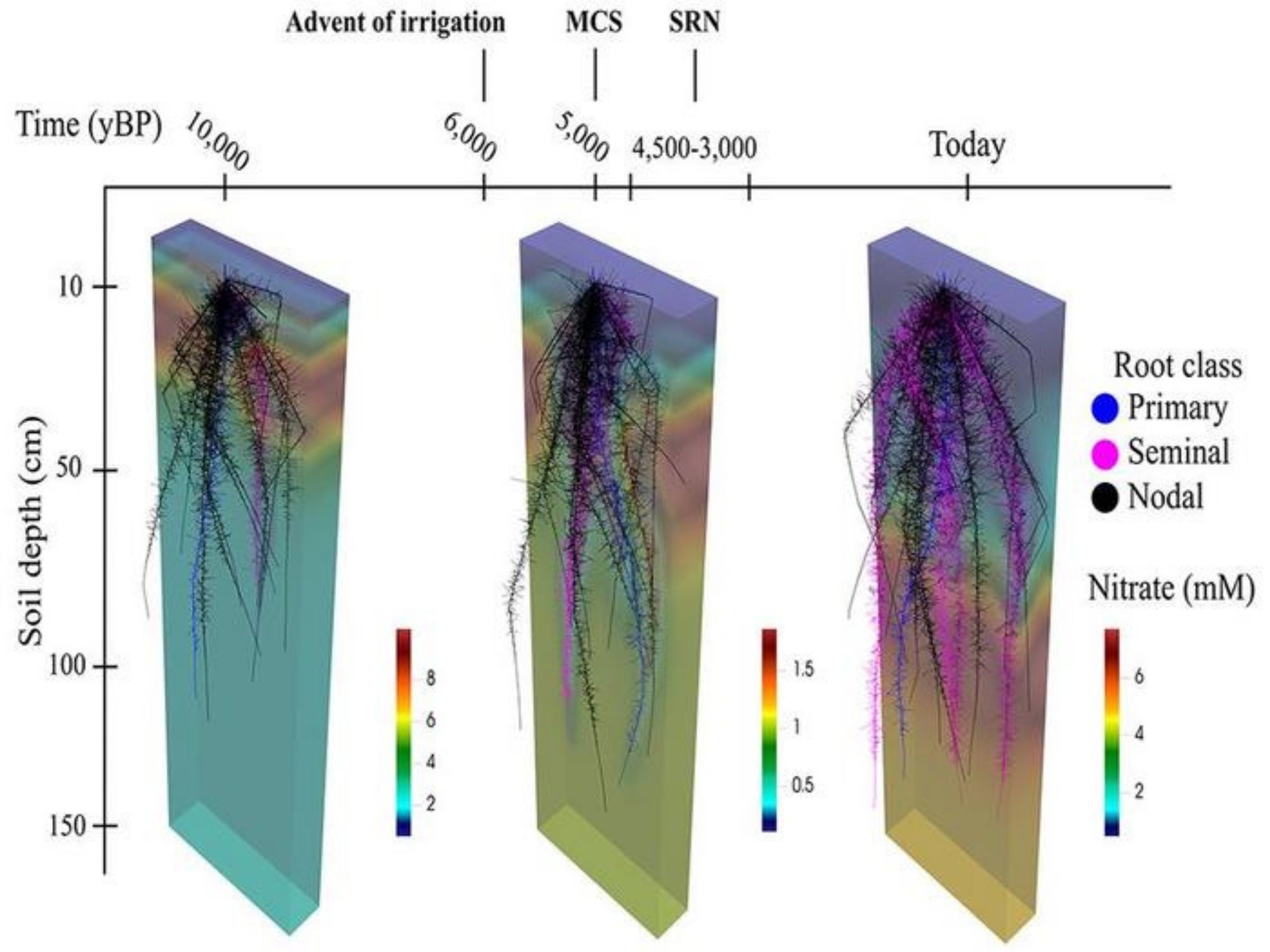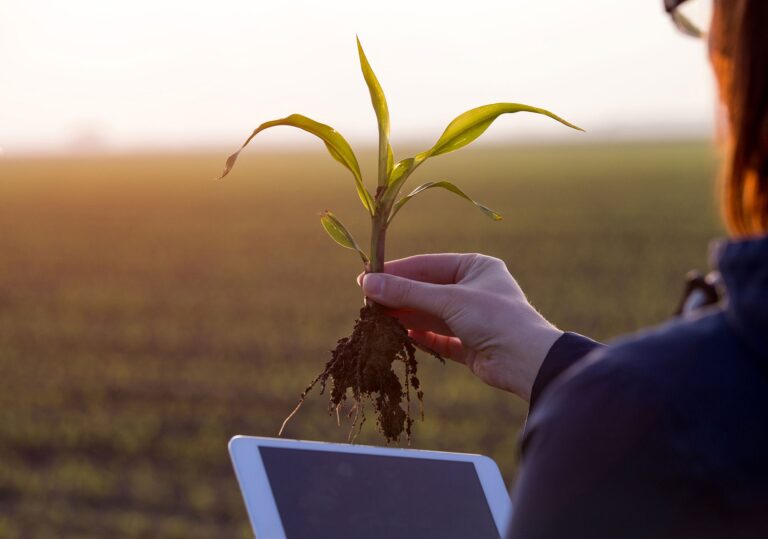Corn was domesticated from its ancestor teosinte in central Mexico beginning about 9,000 years ago by humans selectively breeding the wild plant, transforming its small, hard-shelled kernels into the large, palatable ears of corn we know today.
Over the centuries, root traits of corn — now the most widely planted crop in the U.S., and second globally (by acreage) — evolved in response to both changing environmental conditions and human agricultural practices. Because the role of roots in crop domestication in response to shifting circumstances remains unclear — and because it may be relevant to the present when a warming climate is stressing corn and other crops — a team of researchers led by Penn State plant scientists conducted a study to understand how root traits evolved during corn domestication.
The researchers examined DNA from ancient corn plants and analyzed paleobotanical evidence — fossils of ancient plants as well as pollen and chemical signatures — that provide insights into the history of plant life to see how corn roots evolved. They also analyzed how prehistoric atmospheric carbon dioxide levels and human activity influenced these traits. Considering all these factors, they modeled corn root growth and evolution using the OpenSimRoot Model, a computer program designed to simulate crop response to soil conditions, developed in Penn State’s College of Agricultural Sciences. The team recently reported their findings in New Phytologist.
The researchers reported that three major root changes occurred as part of the transformation from teosinte to corn: Fewer nodal roots — shallow roots that grow from the stem base; development of multiseriate cortical sclerenchyma — thick-walled cells in the root that help roots penetrate deeper soils, that was previously discovered by Penn State researchers; and more seminal roots — early-developing roots that help seedlings access nutrients.
“We reconstructed the root phenotypes of corn and teosinte, as well as the environments of the Tehuacán Valley — one of the oldest regions of corn domestication — over the last 18,000 years using a combination of ancient DNA, paleobotany and functional-structural modeling to reconstruct how root traits evolved over time,” said team leader Jonathan Lynch, distinguished professor of plant nutrition, senior author on the study. “The research suggests that root phenotypes that enhance plant performance under nitrogen stress were important for corn adaptation to changing agricultural practices.”

The study traced the following timeline of root trait evolution, according to study first author Ivan Lopez-Valdivia, who earned a doctorate in Plant Science from Penn State in 2024:
- 12,000-8,000 years ago: Carbon dioxide levels rose, favoring deeper root systems. This supported the reduction in nodal roots and appearance of multiseriate cortical sclerenchyma, which help roots grow deeper and access water/nutrients in drier soils.
- By 6,000 years ago: Irrigation was introduced, changing nitrogen availability — less in the topsoil, more in deeper layers. That further reduced nodal roots and presence of multiseriate cortical sclerenchyma became more useful in accessing this subsoil nitrogen.
- Around 3,500 years ago: More seminal roots emerged. Seminal roots are the initial root system that develops from a seed upon germination, playing a crucial role in supporting the seedling’s early growth by absorbing water and nutrients. This coincided with agricultural intensification, population growth and soil degradation — conditions that made early root development more important for survival.
Although the researchers looked far back into time in conducting their study, Lynch suggested the findings may have implications for the future because corn is one of the most important global crops and the climate is changing, with carbon dioxide increasing and soils changing.
“We looked at DNA from ancient corn plant specimens and used environmental data from soil cores that archeologists have generated, put it all together and said, ‘Okay, when corn was originally domesticated, we changed the environment,” he explained. “The amount of carbon dioxide in the atmosphere was changing, and the plant had to develop a different kind of root system. That’s not only interesting historically — because that’s how we got modern corn — but it also gives some guidance as to what we can do with corn roots in the future to make them better adapted to developing conditions.”


:max_bytes(150000):strip_icc()/BryanJorgensesn-HowtoSelectBetterSeedVarieties-R5A_7313-025_corn-0f6e1cf684454c75bd92722e97d50f5e.jpg)
:max_bytes(150000):strip_icc()/ProblemArtOCT25-a6e1fd0823ff4e1f8d8912ef07a53800.jpeg)
:max_bytes(150000):strip_icc()/ProblemArt-Aug25-355d10643dc54a2bb9e1584f01a4e575.jpeg)



:max_bytes(150000):strip_icc()/101084648_preview-de4749472f174d74b6c39986c8be28d0.jpg)
:max_bytes(150000):strip_icc()/Jon-Kinzenbaw-Jessie-Scottcopy-92cf55b729d445339f4b7189afd6874e.jpg)
:max_bytes(150000):strip_icc()/2208-05-071_farm_grain_bin_silo-453e0ef674bd4e0f97867e1e4281c5dd.jpg)